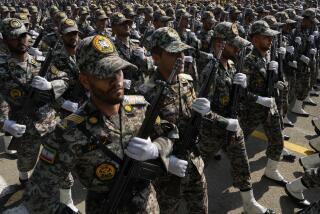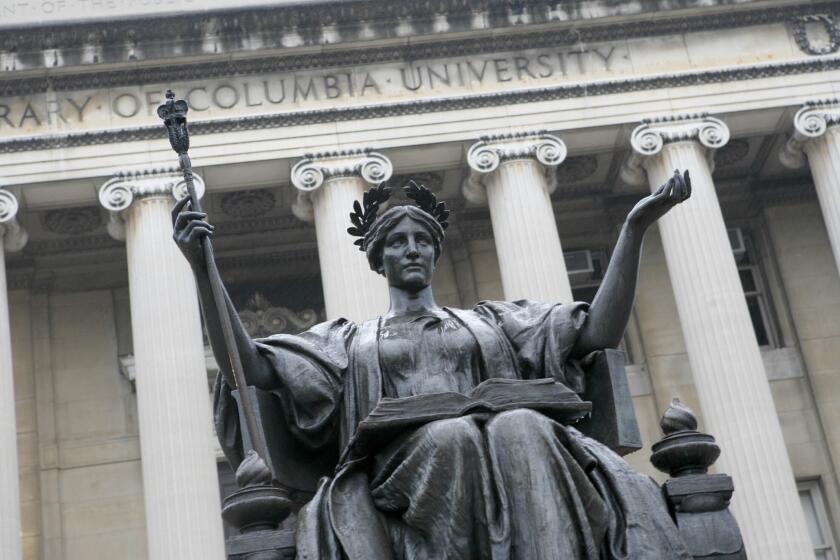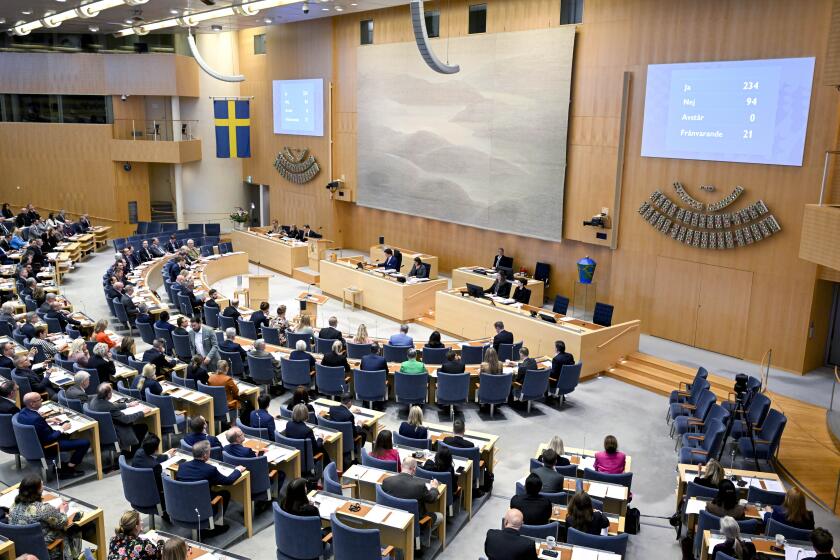Eastern Islam and the ‘clash of civilizations’
Islam has been an American obsession for at least a decade. The 9/11 attacks and the intractable violence in Iraq, Afghanistan and Pakistan — however much we have been the cause of it — have left us bewildered and terrified by this seemingly austere and martial faith.
Islam was spread quickly by the sword from Arabia westward across North Africa, the history books tell us, and is supposedly prone to the extremities of thought to which deserts give rise. But there is a whole other side to Islamic history that has been obscured, even as it illuminates a key strategic geography of the 21st century. While we in the United States have concentrated on the western half of the Islamic world in the Middle Eastern deserts, there is an eastern half in the green forests and jungles of the tropics where global energy routes and merchant sea traffic now intersect.
Islam is only partly a desert religion; it is just as much a seafaring faith, the harbinger not of narrow soldierly thought but of a cosmopolitanism spread by sophisticated merchants over the centuries in the Far Eastern seas. The legendary Sinbad the Sailor was an Arab from Oman based in Basra, in what is now Iraq. His Homeric voyages of the 8th through the 10th centuries encompassed East Africa, the Bay of Bengal and the South China Sea, testimony to the maritime reach of Islam across the longitudes as far as East Asia.
Whereas 20% of Muslims live in the Middle East, 60% are in Asia, according to the Pew Research Center. The Arab world plus Iran, Afghanistan and Pakistan — the geographical summation of our own wars and trepidations — comprises 632 million Muslims. But in India, Bangladesh, Myanmar, Malaysia, Indonesia and the southern Philippines, there are an additional 565 million Muslims. And as the burgeoning middle-class fleshpots of East Asia require increasing amounts of oil and natural gas from the Middle East, China has been aggressively courting the eastern Islamic world, which sits astride the main sea lanes of communication to the Middle East.
Throughout the seaboards of South and Southeast Asia, China provides military and economic aid and is building harbor and container facilities, and Chinese warships pay port visits. The Chinese government considers the South China Sea a “core interest” (much to the consternation of the United States and its allies) partly because it is the gateway to this tropical Muslim cosmopolis that the Chinese know well from the medieval trading networks of the Tang, Song and Yuan dynasties.
When Islam, as the late anthropologist Clifford Geertz explains, swept through Arabia and North Africa, it moved into “an essentially virgin area, so far as high culture was concerned,” so that it constructed from scratch an entire civilization. But as wave upon wave of Arab and Persian merchants plied the eastern seas between the Indian subcontinent and Southeast Asia in the Middle Ages — before the voyage of Vasco da Gama — bearing spices, cotton fabrics, precious stones and minerals, Islam became merely one layer of a richly intricate Hindu and Javanese cultural stew.
This is poignantly expressed by the Sufi Muslim saints or auliyas (protectors) who are believed to have helped found the Bangladeshi port of Chittagong, and who are often confused with Hindu deities; and by the throngs of Muslim schoolchildren, the girls’ hair covered with jilbabs, who flock to the Buddhist temple of Borobudur in central Java.
Although democracy barely exists in the Arab world, it is commonplace in the Islamic societies of South and Southeast Asia. In the Arab world, Islam’s determination to construct a complete, morally perfect civilization has left too little room for secular political legitimacy, with all its messy compromises, to take root. The result is that outside of the traditional monarchies and sheikhdoms, there needs to be frequent recourse to extremist ideology, or, for example, to the sterile Brezhnevite dictatorship of Hosni Mubarak in Egypt.
But Islam in the eastern tropics is liberated from all that: It shares the moral space with other traditions, so that secular politics flourish. Indonesia has more Muslims than any other country in the world, yet it is not an Islamic state.
But this benign version of Islam is now being challenged by modern technology, which allows for the influx of Saudi money and religious ideology. There is also the dynamic influence of Middle East-based global television networks such as Al Jazeera, which has introduced tropical Islam to both Arab and European center-left political sensibilities, making Indonesians, Bangladeshis and others, for example, intimately familiar with the struggle in the Palestinian territories thousands of miles away.
Then there is the effect of commercial air travel, which allows 200,000 Indonesians each year to make the hajj pilgrimage to Saudi Arabia. Yemeni Airlines flies to Indonesia four times a week, strengthening the historic Indian Ocean links between the Hadhramaut region in Yemen and Java in Indonesia. Previous generations of tradesmen from the Hadhramaut and from the Hejaz in Saudi Arabia brought liberal and heterodox Sufi influences to the South Seas. But today, Wahabi money translates Hitler’s “Mein Kampf” into Bahasa Indonesia, the official language of Indonesia.
This truly is globalization, in which various strains of thought are homogenized by mass media, in turn influenced by determined interest groups, into a monochrome worldview.
Yet this new, postmodern Islam with a hard Middle Eastern edge is ramming up against another import: the glitzy materialism that in Malaysia and Indonesia is associated with nominally communist China. This is the real “clash of civilizations” going on. Americans thought they owned the face of global capitalism after the collapse of the Berlin Wall; it turns out that in Islamic East Asia, the Chinese do. Ethnic Chinese own many of the spanking new malls packed with Louis Vuitton, Versace and other designer stores, the places to observe women in the most fashionable silk jilbabs and the most revealing, sophisticated dress. In Muslim Southeast Asia, modesty often stops at the neck.
While Americans understandably fret over the rise of an authoritarian China, it is China’s dynamic capitalist model that is largely responsible for the consumerism in the Muslim Far East, which is hard to disaggregate from the free flow of ideas in the region.
Who will win the battle for the hearts and minds of Muslim East Asia — the extremist Saudis or the materialistic Chinese? We should be rooting for the Chinese.
Robert D. Kaplan is the author, most recently, of “Monsoon: The Indian Ocean and the Future of American Power.” He is a senior fellow at the Center for a New American Security and a correspondent for the Atlantic.
More to Read
Start your day right
Sign up for Essential California for news, features and recommendations from the L.A. Times and beyond in your inbox six days a week.
You may occasionally receive promotional content from the Los Angeles Times.






